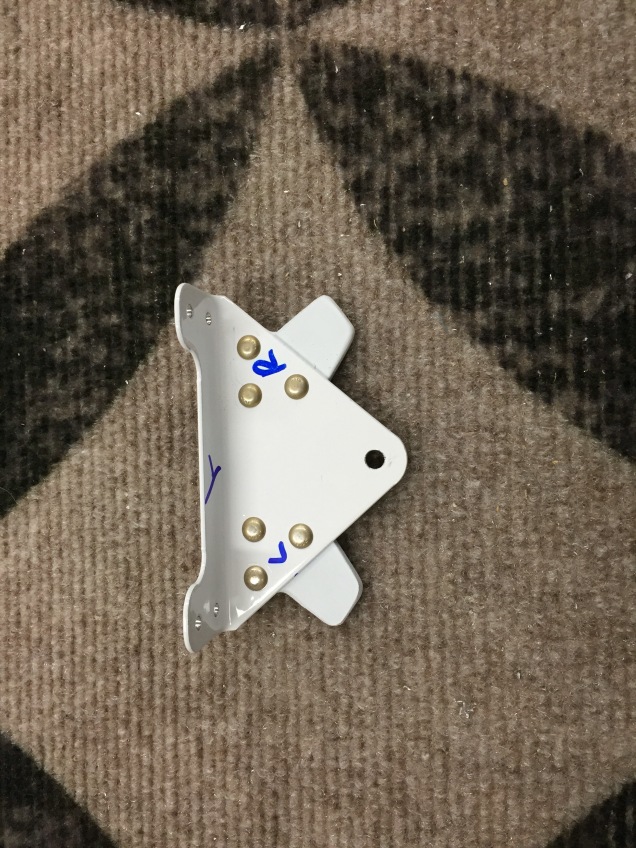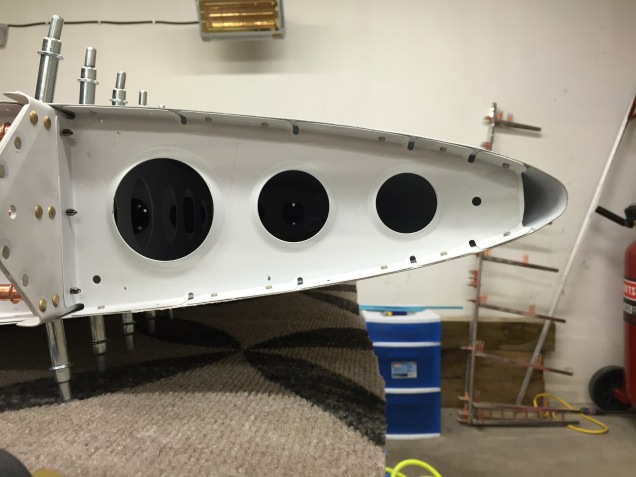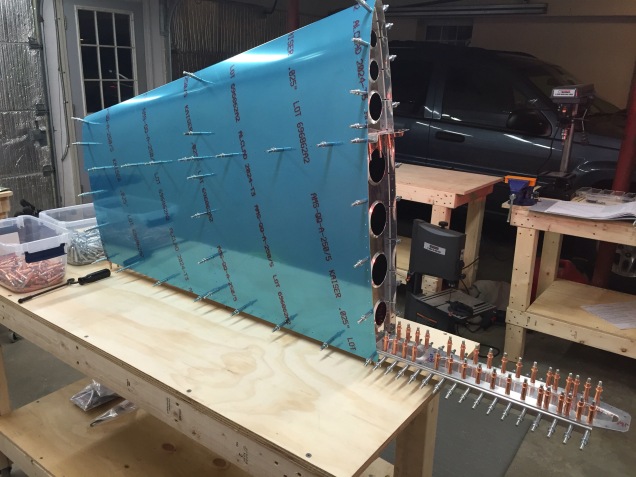Once all of the primer dried, it was time to start assembling the Vertical Stabilizer!
I got started by putting the rudder stops on the bottom-most rudder hinge.

The next step was to assemble the spar, doubler, stiffener plate, and the remaining rudder hinges. Here I am doing that step.

Once that was done, it was onto riveting the spar pieces together. My pneumatic squeezer made quick work of that.

Next up, was putting the skeleton back onto the spar and riveting some of the upper ribs to the spar. Once that was done, I cleoco’ed the skin onto the skeleton, and started to rivet the forward middle rib and skin together. I got one side done, and after flipping it over, I got the the 4th rivet and decided I needed to drill that one out. I drilled the head out and started to use my punch to push the shank of the rivet through. Once the shaft let loose, it caused my punch to go through the skin hole and bend the flange of the rib behind it. SIGH!

Of course, looking at this picture, I realize I need to put some tape on my bucking bar, or be more careful to not scrape it on the rib edges. It’s taken off a bit of my primer.
So I drilled out the rivets that I had completed on that side and uncleco’ed the skin to open it up. I was able to bend the flange back into a reasonable position that should work. Being a bit concerned, I also contacted Van’s support to ask if they thought it was okay to build on or stop and order a new piece. I was pleased when about a half hour later, they responded that it doesn’t look like it bent enough to cause work hardening and to bend it back and carry on. Here are a couple of pics of it bent back mostly into position.


I was then able to close things back up and re-rivet the rib. I also completed the froward parts of the top and bottom ribs as well.



 More work on finishing up the VS this weekend.
More work on finishing up the VS this weekend.





































